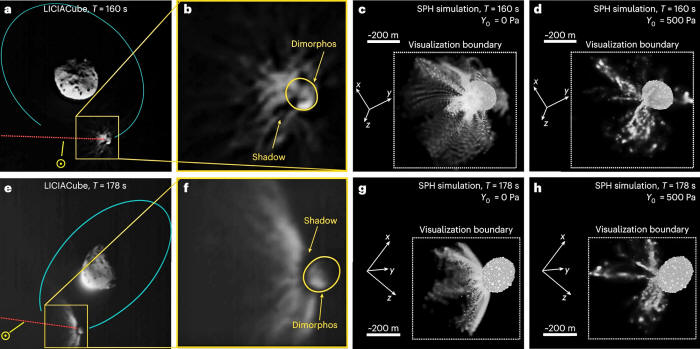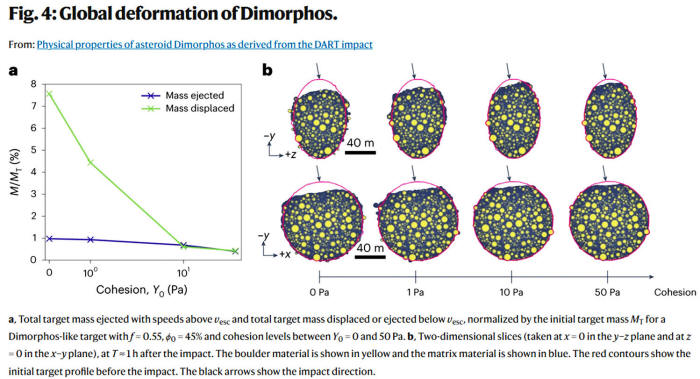|
February 29, 2024 from SpaceWeather Website
Observations and simulations of the DART strike on Dimorphos.
This is not what NASA expected to happen.
Back in Sept. 2022, the space agency's DART spacecraft slammed into asteroid-moon Dimorphos, blasting huge streamers of debris into space and changing its orbit around Didymos.
Mission planners figured there must be a crater where the spacecraft struck, but new research published this week in Nature Astronomy suggests something completely different happened.
Led by Sabina Raducan, a postdoc at the University of Bern's Physics Institute in Switzerland, the team of researchers modeled DART's impact using Bern's hydrodynamics shock physics code.
The software has successfully reproduced
other impacts such as the time in
2019 when Japan dropped a copper impactor into asteroid Ryugu.
DART's impact ejected more than 10 million kg of
this material. Instead of producing a crater, DART changed the shape
of the entire pile. the global reshaping of Dimorphos.
Their results suggest that Dimorphos is a loose collection of debris from the rapidly-spinning parent Didymos.
Whenever something flies off Didymos, because of,
say, a meteorite collision, it tends to settle on Dimorphos, a
process which can take several days to years.
If so, it will give NASA something to think about
as the space agency tries to figure out how to deflect potentially
dangerous asteroids in the years ahead.
|




